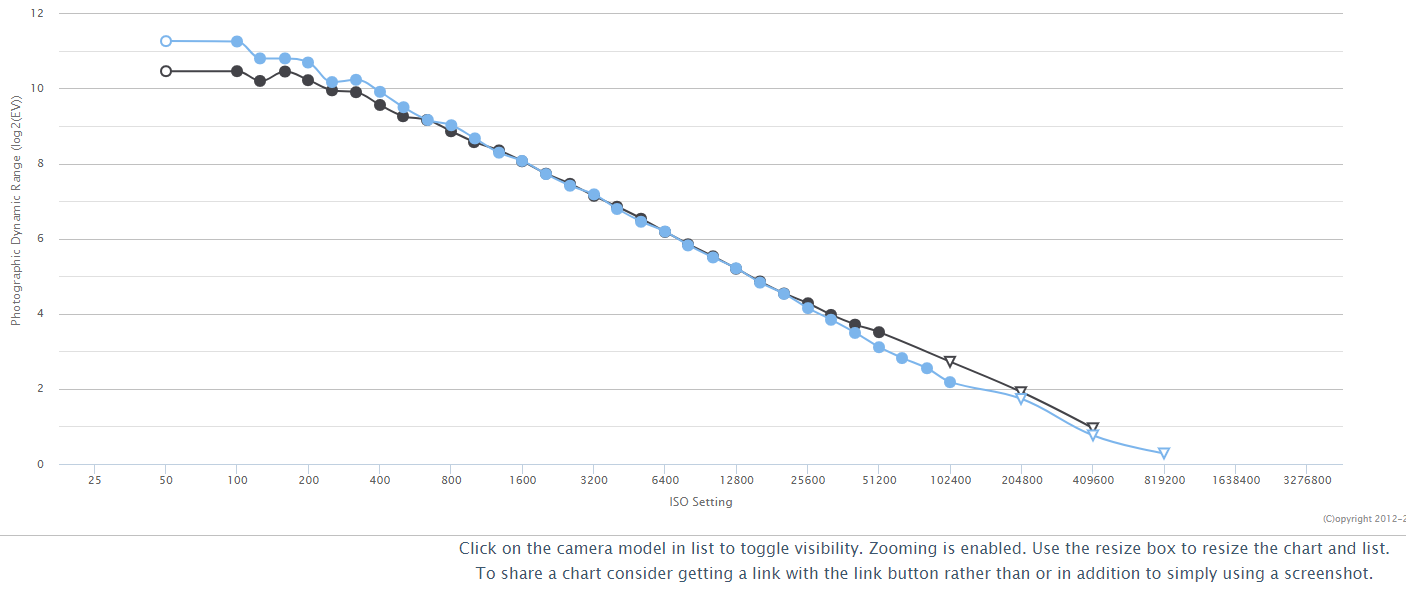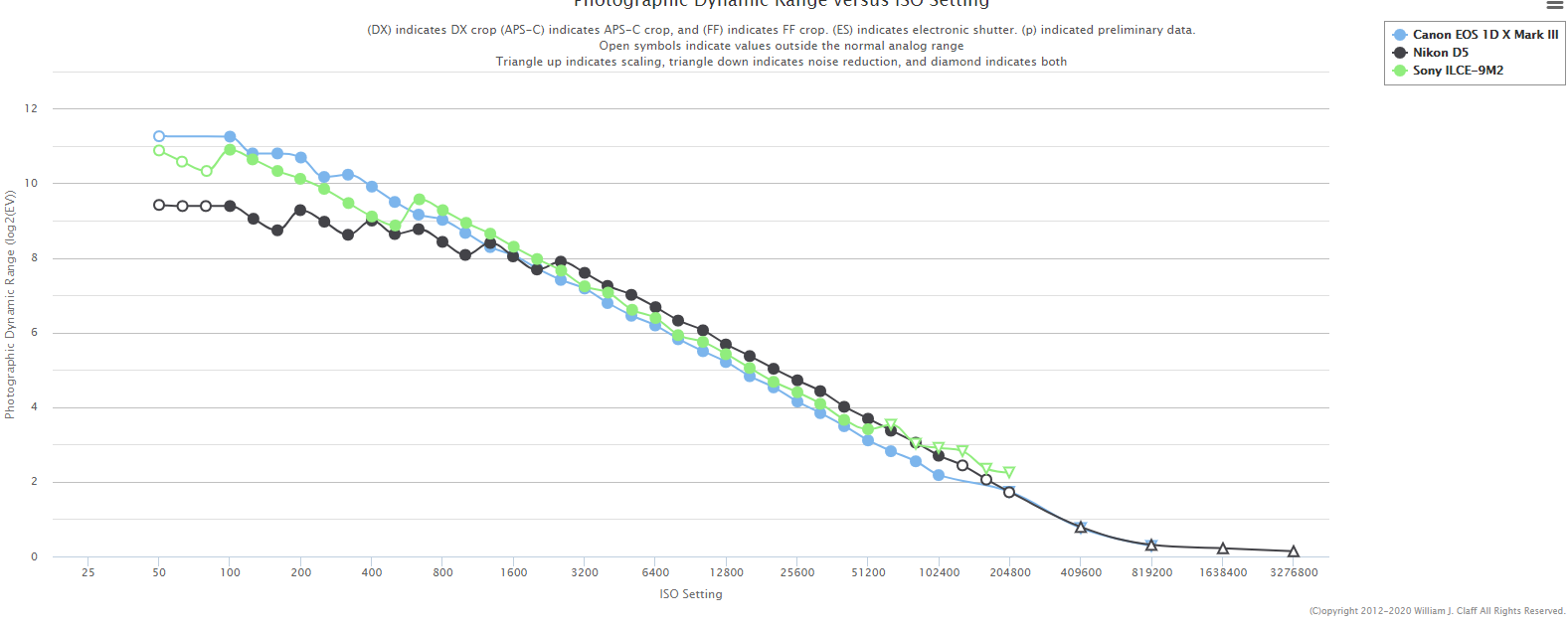This post may contain affiliate links(s). An affiliate link means I may earn advertising/referral fees if you make a purchase through my link,
without any additional cost to you. It helps to keep this site afloat. Thank you in advance for your support. If you like what we do here, maybe buy me a
coffee.
1DX Mark III Dynamic Range Tested: Class leading
PhotonsToPhotos has tested the 1DX Mark III - and it gains over it's competitors in terms of low ISO dynamic range.
Against the 1DX Mark II (the black line plot), you will see nearly 1EV more dynamic range at ISO 100 with the 1DX Mark III. Dynamic range starting from around ISO 800 onwards is the same between the two cameras.

While this is excellent, and Canon did say that noise levels were improved - a full stop gain is very welcomed for those that use the 1DX Mark III in low ISO, high dynamic range use cases.
What sets the 1DX Mark IIII apart, is when you compare it to the known competitors at this time (the D6 is not shipping so data is not yet available for that - but all reports seem to indicate that it uses the same sensor as the D5).
The Sony A9 Mark II sees an intermediate gain around ISO 625, from that ISO forwards, it has a slight edge over the 1DX Mark III. Under that, the 1DX Mark III has clearly better dynamic range results.
Against the D5, the comparison becomes better for the Nikon after ISO 800, showing a really slight gain over the 1DX Mark III of about .25EV. However, before ISO 800, it's not even close, trailing by as much as 2.5EV.

I'm sure, as with the 1DX Mark II against various other cameras, some review sites will suddenly discover that dynamic range is no longer so important ;)
All in all, I think it's safe to say that the 1DX Mark III sports class leading dynamic range, pulling head (sometimes substantially) and barely under the dual gain sensors used in the Nikon D5 and Sony A9 II. The Nikon D6 has yet to be tested, but we haven't heard anything to suggest that Nikon improved the low ISO dynamic range any. They simply state that high ISO noise has improved - which could simply mean JPEG processing and not actual sensor performance.
blog comments powered by